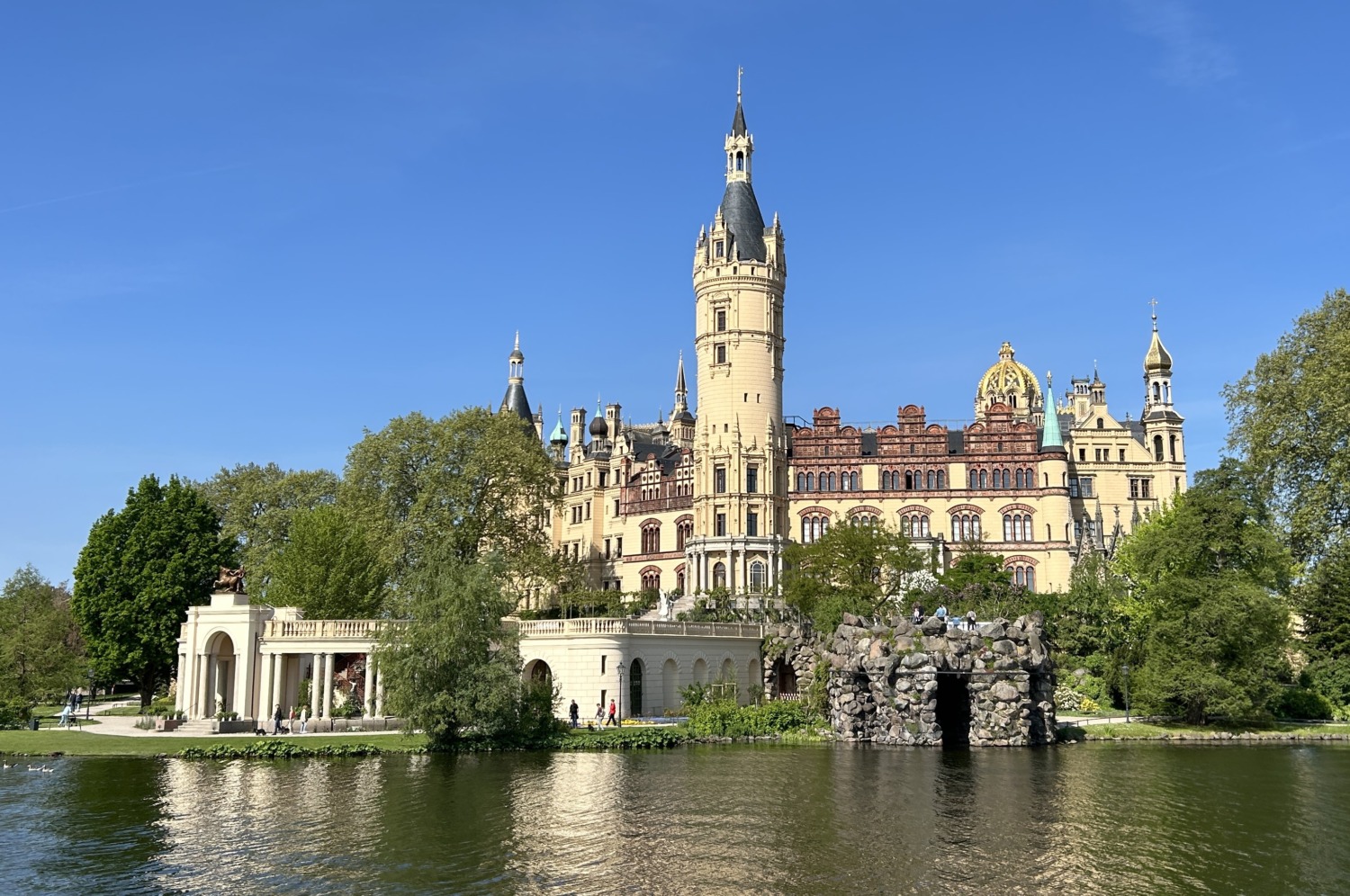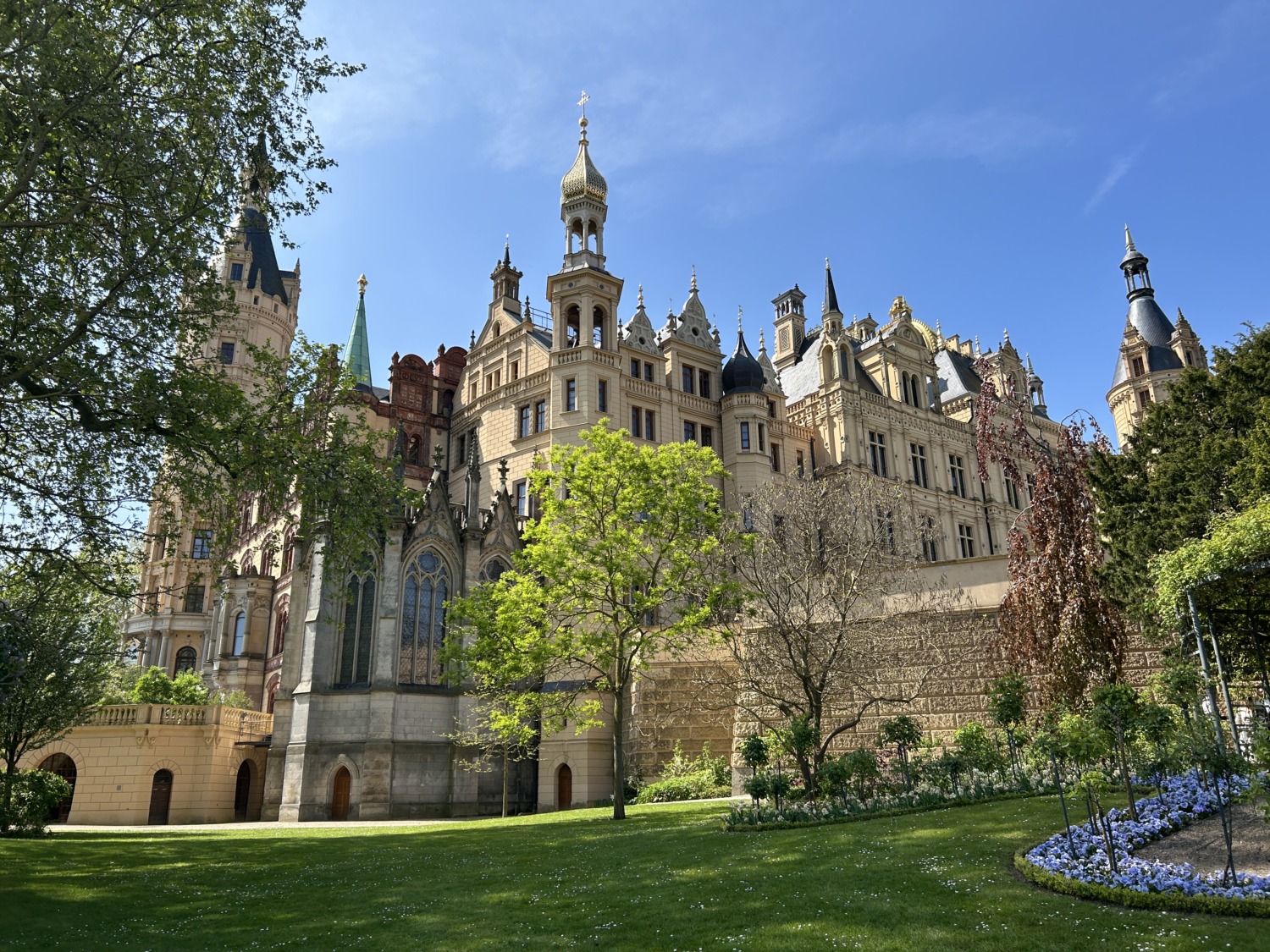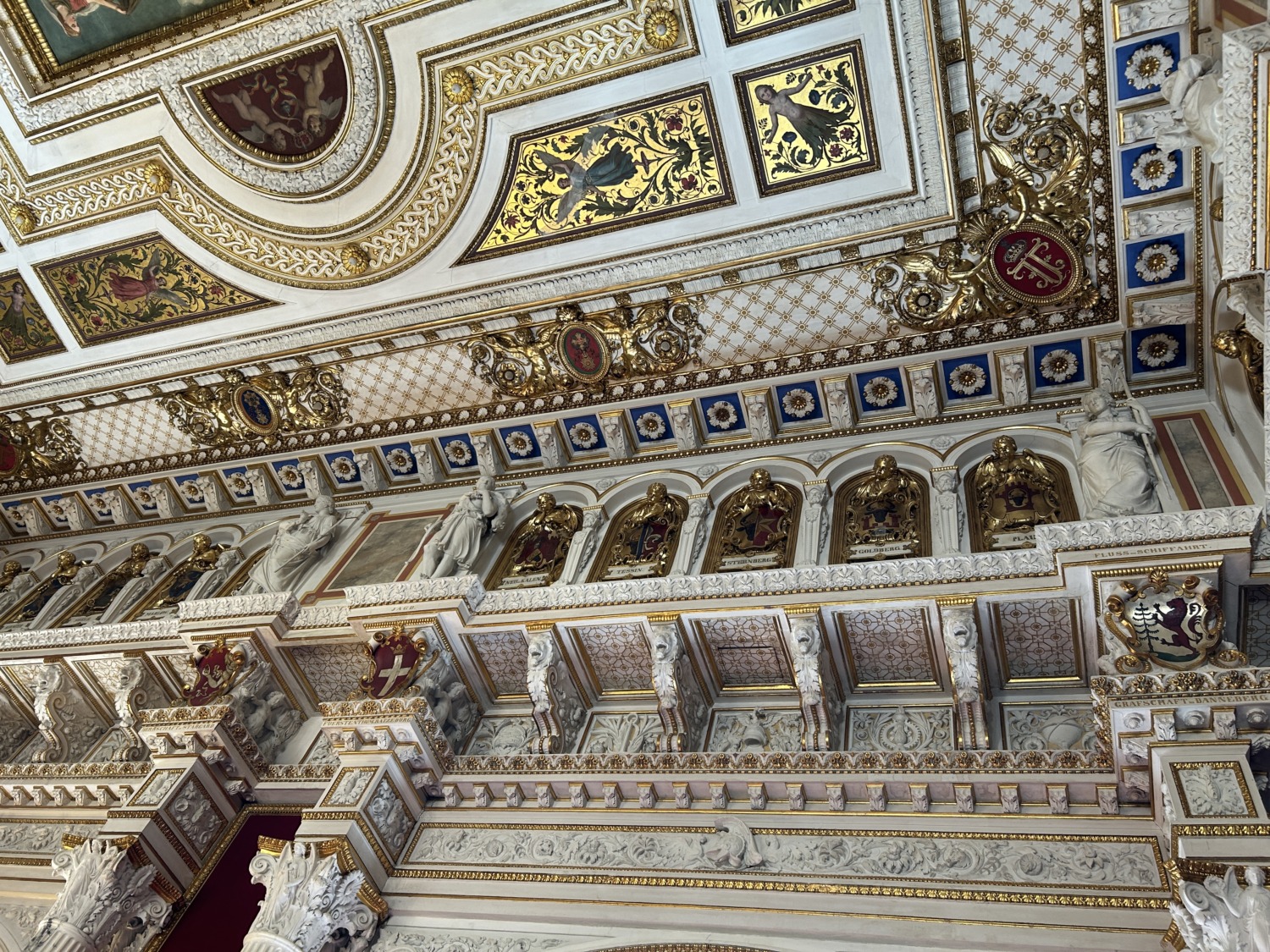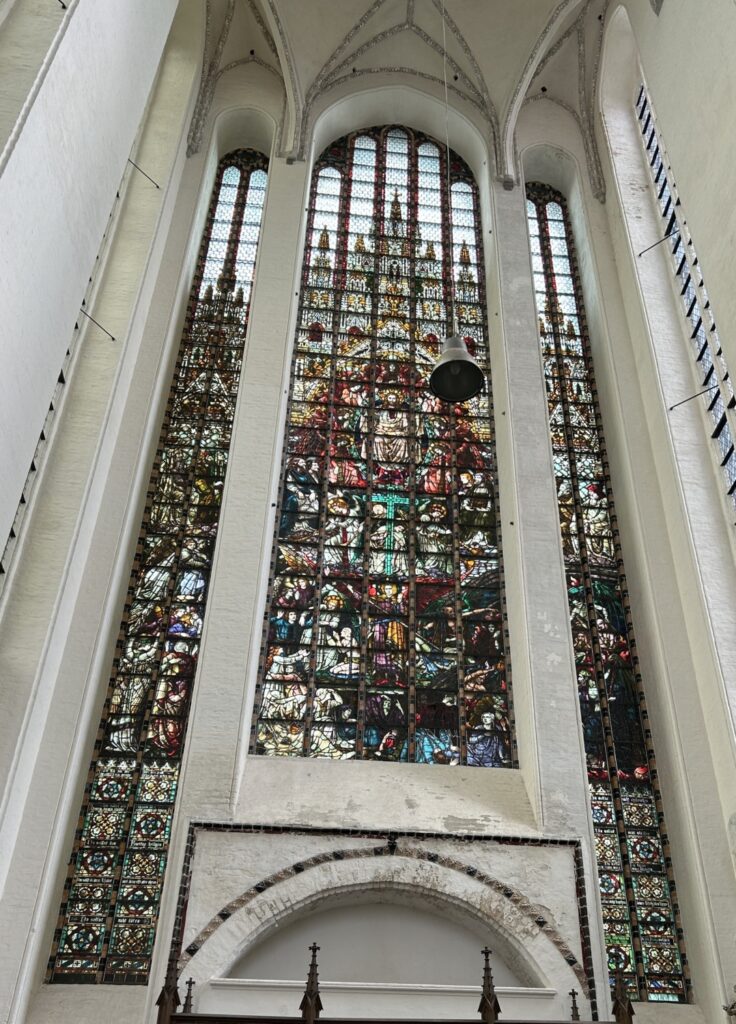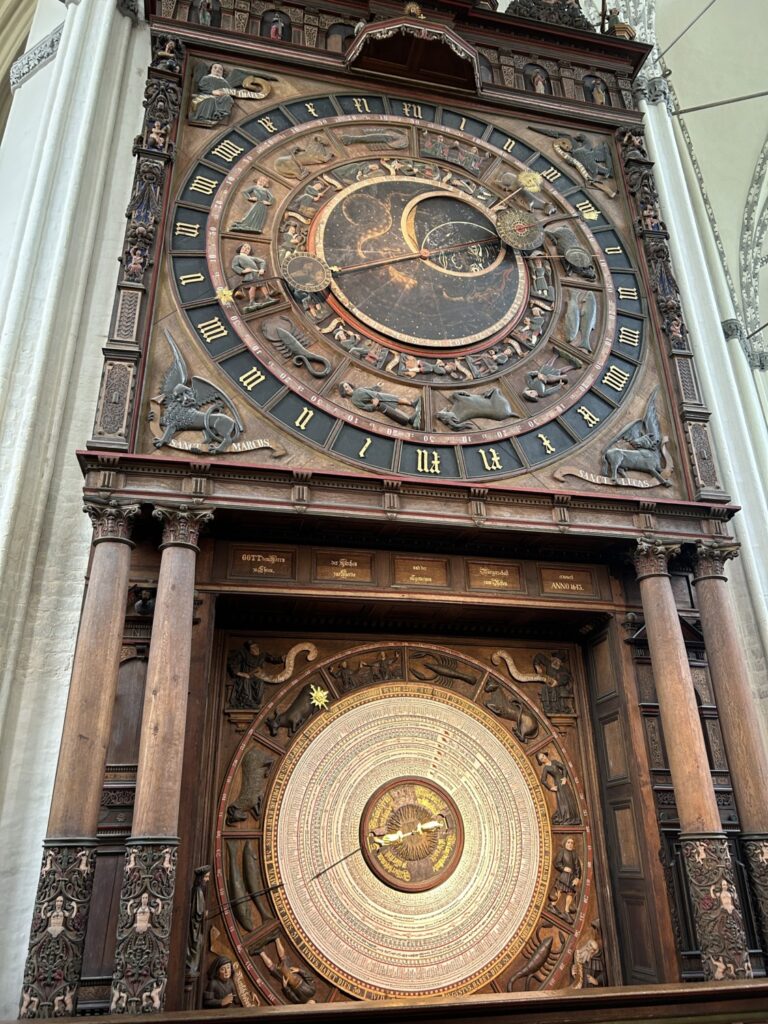Schwerin Castle is located in the northeastern part of Germany, in what was formerly East Germany or the German Democratic Republic. Now, of course, it is in the Mecklenburg-Western Pomerania area of Germany. Our ship docked in Warnemunde, and we boarded a bus for the 90 minute ride to the castle.

Our guide’s name was Teresa and she was a language whiz. During our tour we heard her speak German, Spanish, French, Italian, and English. She was 14 years old when the wall came down between East and West Germany in 1989 and she told us amazing stories of life behind the iron curtain. Teresa told us about the lack of freedom. For instance, her mother wanted to be a math teacher but they didn’t need teachers so she was allowed to become a obstetrician/gynecologist instead. Her parents had to get on a waiting list to get an apartment and they were married three years before they had their first apartment.

Teresa’s stories were very interesting and she told them without any condemnation of the communist system. She also told us how difficult it was for her to learn to speak up for her ideas after the wall came down. Teresa became one of the first exchange students from the GDR to the United States. She lived in Michigan and, even simple decisions, like what she wanted for supper, were very hard. When the wall came down and her family got their first telephone, she called her grandparents every day because it was such a novelty.
Teresa’s stories added a lot to the historical references of our day. Schwerin Castle is located on Lake Schwerin, the third largest lake in Germany. It is the historical home of the Dukes of Mecklenburg. The Duchy was established in 1160, but the site of the castle had been occupied from 980 on. The earliest parts of Schwerin Castle date from 1471. But the castle in its present, spectacular form was renovated extensively by Grand Duke Frederich Franz II in the mid 1800’s. Frederich Franz II was Grand Duke from 1842 to 1883 and he wanted to live in a grand style. For that reason, Schwerin Castle is suitably ornate.
We started our tour with a short boat ride to see the castle from various angles. Then we went into the castle for a tour of 20 of the 900 rooms. Many of the rooms are part of the the Parliament of this section of Germany and are off-limits to tourists. The rooms were elaborate and amazingly detailed. Unfortunately our museum guide, Peter, wasn’t the best tour guide. His English was perfect, but he didn’t put the talk together in a comprehensible way. Our tour seemed interminable, which was too bad considering how breathtaking each of the rooms was.
The most elaborate room was the throne room. There were murals and designs painted on the ceiling with gold gilding. Around the ceiling were crests of each of the territories and cities in the Duchy. The doors had carved panels with different virtues on them. Quite spectacular.
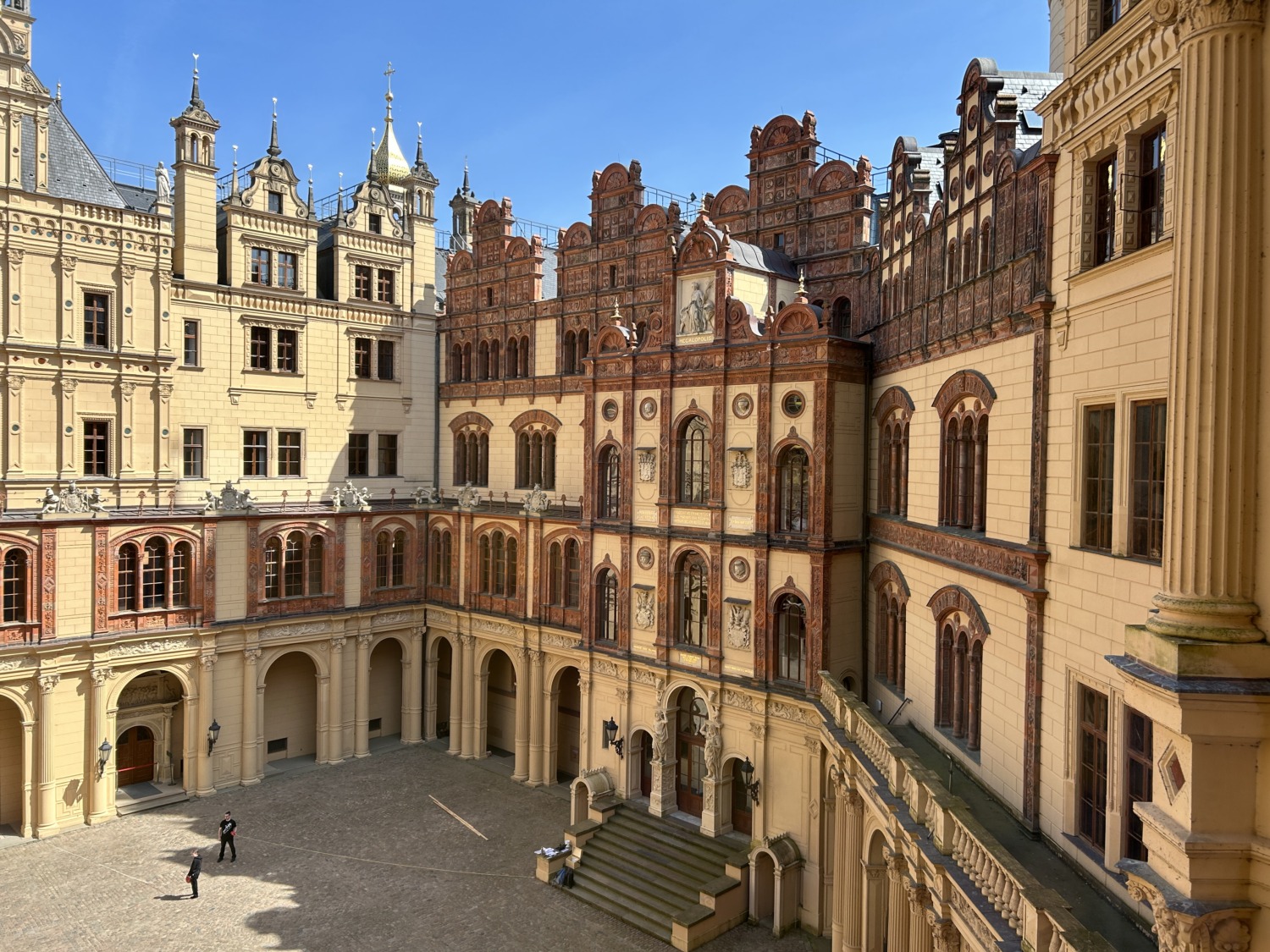
During the GDR Schwerin Castle was used as a training school for Kindergarten teachers. Gradually it fell into disrepair. But, when the wall came down, supporters started rallying to restore the castle to its 1850’s grandeur. Recently, the City of Schwerin applied for it to become an UNESCO World Heritage Site.

After our tour of the castle we took a trolley/tourist train called the Tschu-Tschu to the town square. We had a traditional German lunch of pork, vegetables, and potatoes. When lunch was over, Tom and I headed out on our own to explore the shops around the town square. There were lots of fun shops, but no souvenir shops. I asked Teresa about it, and she said Germans don’t really do souvenirs. Instead, Tom and I found some pastry goodies in a bakery. Do extra pounds count as souvenirs? It may be what I am bringing back.
We climbed on the bus and headed to Rostock, the town next to Warnemunde. Rostock has a famous cathedral, St. Mary’s Cathedral, and Tom and I made a beeline for that. We paid our admission and then took a quick walk around. The first thing I noticed was the extraordinarily fancy pulpit. Do you preach better if you have a fancy pulpit halfway up a marble column? The pulpit was added in 1574 after the Reformation when Germany became Lutheran.
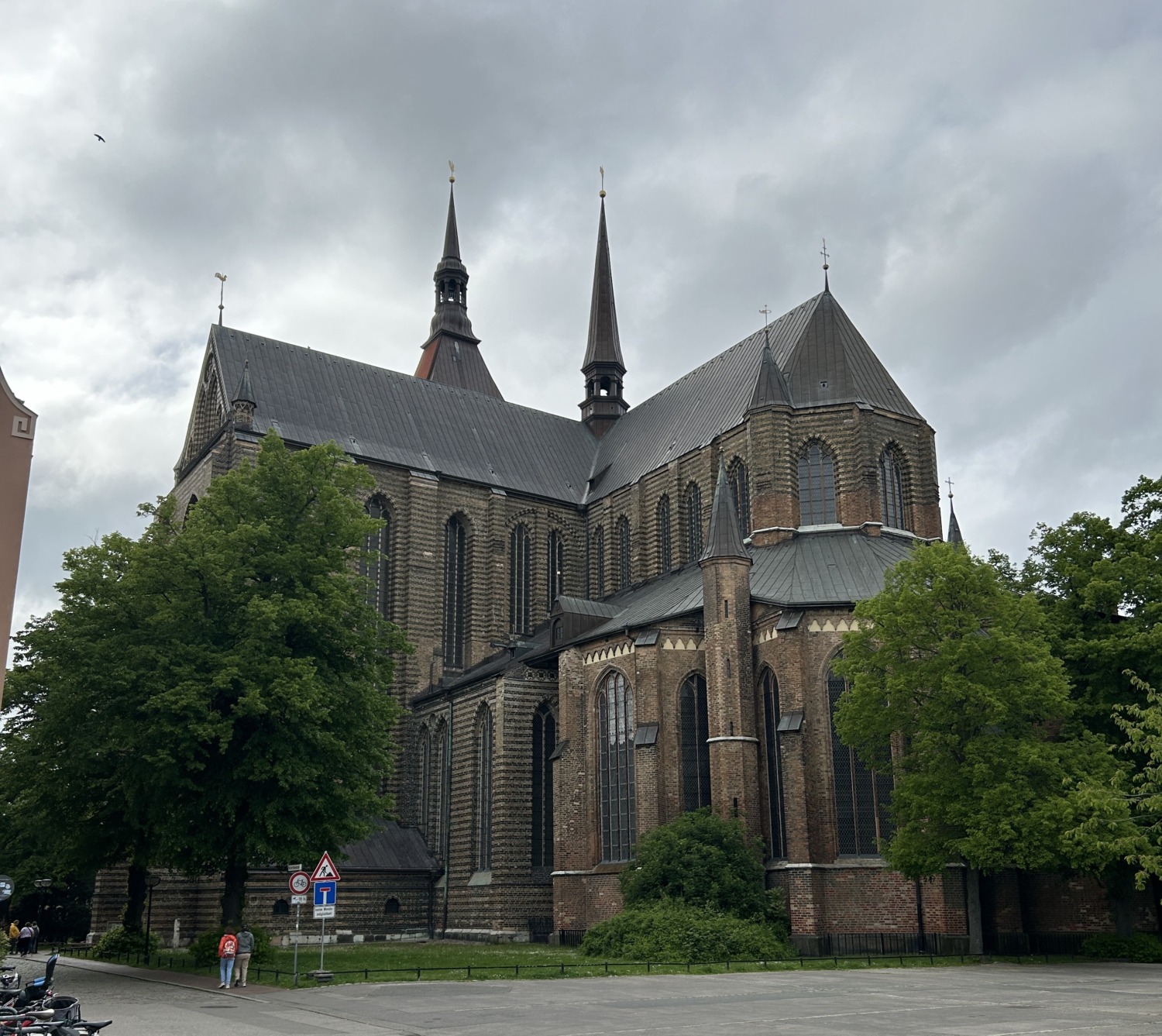
St. Mary’s Church was built in the 1230’s. Over the years there have been additions to it, such as the transept in 1398. The huge pipe organ (three or four stories high) was added in 1770 and has been rebuilt several times since. On the day we visited, they were tuning the organ so we got to hear it played. The sound filled every crevice in the huge sanctuary. The baptismal font is bronze, cast in 1290. The huge stained glass window was installed in 1904. All the other stained glass windows were shattered during bombing by the Allies in World War II.
The highlight of the church visit, at least for most people, is the Astronomical Clock built by Hans Duringer in 1472. It was restored and adapted to the new heliocentric system in 1643 and has been working ever since. It is wound every day by hand. The clock has the day, year, time, zodiac, solar altitude, and phase of the moon. Every day at noon and midnight there is a procession of the apostles kneeling down in front of Jesus.
We studied the clock until Teresa came and told us it was time to head for the bus. Never enough time. A cruise stop just whets our appetite to spend more time in an area. We climbed back on the bus to head back to Warnemunde and the cruise port. It was a long day but Teresa was a great guide and made it very interesting. The former GDR is a vibrant and interesting place to visit. The people are investing lots of time and money into restoring it to its historic beauty.

